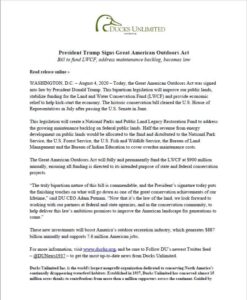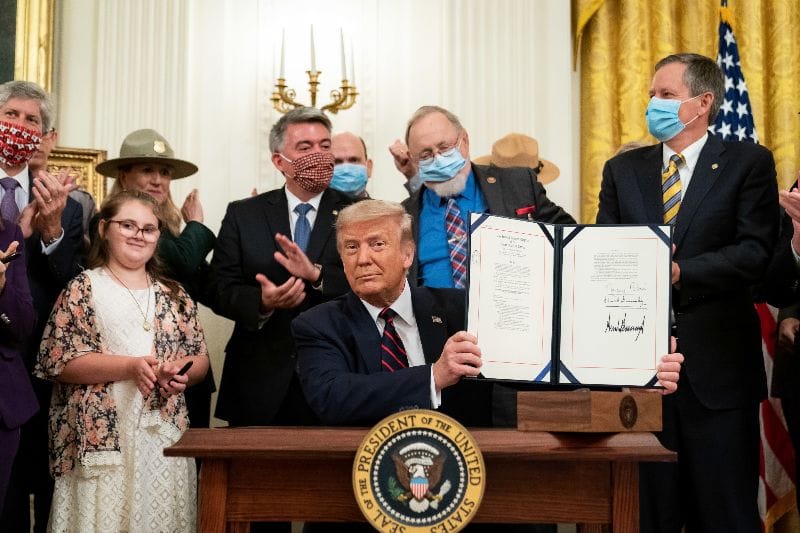AMERICA—On Tuesday, August 4, President Trump signed the Great American Outdoors Act which he referred to as “the single largest investment in America’s national parks and public lands in history.”
The briefing that may be found on the White House web page states, “This legislation marks the most significant conservation accomplishment since the presidency of Theodore Roosevelt.”
The White House web page said about the signing of this act, “The President’s action will improve National Parks and public lands for the American people, while greatly benefiting our Nation’s economy.”
A small crowd gathered for the signing, most of whom were wearing masks, including Vice President Mike Pence and members of the National Parks Service.
This act will renew public roads, lands, National Parks it will also boost the economy by creating 100,000 infrastructure-related jobs. This legislation provides $900 million annually in permanent funding to Land and Water Conservation Fund (LWCF) and $9.5 billion to be allocated to restore infrastructure in National Parks and public lands over the next 5 years.
Over 850 conservation groups including 43 sportsmen/sportswomen groups have gained support through this legislation.

Since COVID-19 struck this country, U.S. citizens have taken to the great outdoors finding that public lands and National Parks are in great need of restoration.
Public records indicate that 327 million people visited National Parks in the last year contributing more than $41 billion to the U.S. economy.
Outdoor recreation in this country has reportedly accounted for 2.2 percent of the Gross Domestic Product (GDP), creating 5.2 million jobs in 2017 alone.
The LWCF and public lands have reportedly contributed $60 billion to the American economy while supporting 400,000 jobs through recreational activities. Recent economic analysis indicates that for every $1 million invested in LWCF, 16-30 jobs are supported.
In a press release dated Thursday, May 28, The Bureau of Land Management (BLM) proposed modernization of forest management and rules that had not been updated in 35 years.






